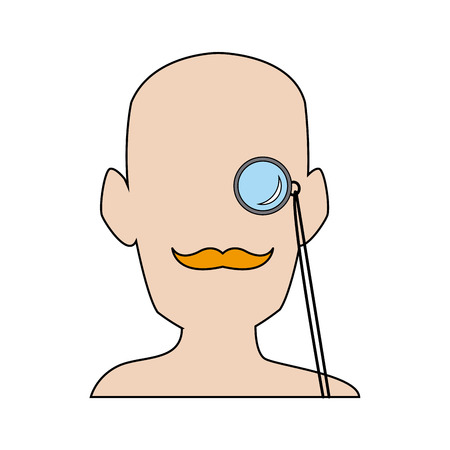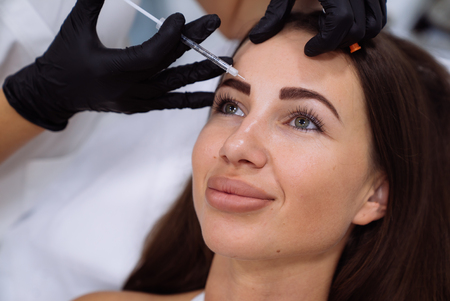Introduction to Eyebrow Tinting
Eyebrow tinting has become a go-to beauty hack for men and women across the United States looking for fuller, more defined brows without the daily hassle of pencils or powders. At its core, eyebrow tinting is a semi-permanent coloring process that enhances the shape and color of your natural brows. The treatment involves applying a specially formulated dye to the brow hairs, allowing you to achieve a bolder look that lasts anywhere from two to six weeks depending on your skin type, hair growth cycle, and aftercare routine. This service is especially popular among people with lighter or sparse eyebrows, athletes who want sweat-proof definition, and busy professionals searching for low-maintenance grooming options. Whether you’re aiming for a dramatic transformation or just want to fill in some gaps, eyebrow tinting offers a customizable solution that fits seamlessly into the fast-paced American lifestyle.
2. The Science Behind Eyebrow Tinting
Eyebrow tinting isn’t just a quick beauty hack—it’s rooted in some pretty interesting science. Let’s break down exactly what’s happening on a chemical and biological level when you get your brows tinted. Essentially, eyebrow tinting uses semi-permanent dye to enhance, shape, and define your natural brows. The process involves applying a specially formulated pigment that interacts directly with the hair shaft of each brow hair.
How Pigments Work with Eyebrow Hair
Eyebrow hair is made of keratin, a protein that gives it strength and structure. When the tint is applied, it penetrates the outer cuticle layer of the hair and deposits color molecules within the cortex—the thickest layer of the hair strand. This means the pigment doesn’t just sit on top; it actually becomes part of the hair until it naturally sheds over time.
Chemistry of the Tinting Process
The science comes down to oxidation. Most brow tints contain a low-level peroxide or similar oxidizing agent. When mixed with the pigment, this agent opens up the cuticle of each brow hair, allowing color molecules to slip inside and lock into place as they oxidize. Here’s a simplified breakdown:
| Step | Chemical Action | Result |
|---|---|---|
| 1. Application | Tint + oxidizer applied to brows | Pigment starts reacting |
| 2. Penetration | Cuticle opens slightly | Pigment enters cortex |
| 3. Oxidation | Pigment molecules enlarge & bond inside hair | Semi-permanent color sets in |
| 4. Removal/Rinse | Tint wiped off surface of hairs/skin | Brow color remains in hair shafts |
Why Tint Lasts Longer Than Makeup
The reason tinted brows last much longer than makeup is because the color is literally inside the hair—not just sitting on your skin like a pencil or powder. As your natural brow hairs shed and grow (usually in about 4–6 weeks), so does the tint.

3. Benefits of Eyebrow Tinting
If you’re still on the fence about eyebrow tinting, let’s break down why it’s such a game changer for so many guys and gals out there. First up: convenience. Imagine rolling out of bed and not having to fuss with powders, gels, or pencils—your brows are already looking sharp and defined. That’s one less step in your morning routine, which is honestly a win when you’re scrambling to make that 8 a.m. meeting or hit the gym before work.
Another big plus? Appearance. Tinted eyebrows give your face an instant lift, making your eyes pop without any makeup wizardry. For those of us with lighter or patchier brows, tinting fills in the gaps and creates a fuller, more uniform look that lasts for weeks. It’s subtle but makes a noticeable difference—think “you, but more awake.”
And let’s talk about time-saving. If you’re used to penciling in your brows every day, tinting is a real lifesaver. You get back precious minutes each morning (or night) that you can spend on literally anything else—breakfast burrito run, anyone? Plus, because the color gradually fades instead of washing off instantly, you don’t have to worry about smudges or your brows disappearing after a workout or swimming session.
In short, eyebrow tinting isn’t just about looks—it’s about simplifying your life and feeling confident no matter what’s on your schedule.
4. Common Types of Eyebrow Tints Used in the US
When it comes to eyebrow tinting, not all products are created equal—especially in the US market, where both professional salons and at-home kits offer a range of formulas. Understanding the main types of tints can help you make smarter choices for your brows and ensure a safe, natural-looking result. Here’s a breakdown of what you’ll find out there.
Professional Salon Products vs. At-Home Kits
Most American salons use semi-permanent dyes specifically formulated for facial hair, while at-home kits are designed for easy, safe application by non-professionals. The main difference is often the strength of the dye and the complexity of the application process.
| Product Type | Main Ingredient | Typical Longevity | Application Method |
|---|---|---|---|
| Cream-Based Tints (Salon) | Oxidative dye (paraphenylenediamine/P.P.D) | 3-6 weeks | Brush-on, processed by pro |
| Gel Tints (At-Home/Salon) | Semi-permanent colorants, less P.P.D | 1-2 weeks | Brush or spoolie, DIY-friendly |
| Henna-Based Tints (Both) | Natural henna powder | Up to 4 weeks | Paste applied & set, natural alternative |
| Tinting Mascara (At-Home) | Temporary pigment gel | 1 day (washes off) | Wand applicator, quick fix |
Chemical vs. Natural Formulas: What’s Trending?
Chemical-based tints remain popular in salons due to their longevity and consistency in color payoff. However, henna-based and plant-derived options have gained traction among health-conscious consumers and those with sensitive skin. If you’re seeking a more natural approach, look for kits labeled “plant-based” or “PPD-free.” These alternatives tend to stain both skin and hair for a fuller look but may not last as long as traditional chemical dyes.
Key Considerations for Safety and Results
No matter which formula you choose, always perform a patch test to check for allergies—this step is especially important with oxidative dyes that contain PPD or similar compounds. Also, remember that salon professionals are trained to select shades that flatter your complexion and brow tone; if you’re going DIY, pick a kit with clear instructions and shade recommendations for your skin type.
The American brow scene offers plenty of options, from bold salon tints to subtle at-home gels. Knowing your products—and what’s inside them—makes all the difference in achieving safe, stunning results.
5. How to Safely Tint Your Eyebrows
Step-by-Step Guidance for Salon-Goers
1. Research and Choose a Reputable Salon
Before booking your appointment, check out local reviews on platforms like Yelp or Google Maps. Look for salons that have licensed estheticians and a strong reputation for cleanliness and professionalism.
2. Ask About Products and Patch Testing
When you get to the salon, don’t hesitate to ask about the products they use—make sure they’re FDA-compliant and specifically formulated for eyebrows, not hair dye. Always request a patch test at least 24 hours before your tinting session to rule out allergic reactions.
3. Observe Hygiene Practices
Pay attention to whether the technician wears gloves, uses sanitized tools, and follows proper cleaning protocols. In the US, salons are held to strict health standards, so don’t be afraid to speak up if something feels off.
Step-by-Step Guidance for DIY Enthusiasts
1. Buy the Right Products
Pick up an eyebrow tint kit from a trusted American retailer—Ulta, Target, or Amazon are solid options. Double-check that it’s made for brows, not lashes or scalp hair, since those formulas can be too harsh.
2. Perform a Patch Test
This is non-negotiable: mix a small amount of the tint and apply it behind your ear or on your inner arm. Wait 24 hours to ensure there’s no redness or itching. Even if you’ve tinted before, ingredients can change between brands or batches.
3. Prep Your Brows and Workspace
Wash your face thoroughly and remove all makeup or oils from your brows. Lay down some paper towels or old newspaper to keep your counter clean, and make sure you have cotton swabs, petroleum jelly (to prevent skin staining), gloves, and a timer ready.
4. Mix and Apply Carefully
Follow the kit instructions exactly—usually this means mixing the dye and developer in a small tray. Use the applicator brush provided, carefully brushing the tint onto your brows in the direction of hair growth. Avoid getting product on your skin; use a cotton swab dipped in petroleum jelly as a barrier around your brow line.
5. Wait and Remove Safely
Set a timer according to package directions (typically 5–10 minutes). Wipe away excess tint gently with a damp cotton pad or tissue—never scrub. If any irritation occurs during processing, rinse immediately with cool water.
General Safety Tips for Everyone
– Never use hair dye on your eyebrows—it’s much harsher than products designed for facial use.
– Always check ingredient lists if you have sensitive skin or allergies.
– If you experience burning, swelling, or prolonged redness after tinting, seek medical advice right away.
– Don’t over-tint; waiting at least 4–6 weeks between sessions is best for brow health.
Tinting your eyebrows is totally doable—whether at home or in a salon—but taking safety and hygiene seriously will save you from unwanted surprises (and potential ER visits). If you’re new to tinting, err on the side of caution: when in doubt, consult a pro who knows their stuff.
6. Risks, Reactions, and How to Avoid Them
Let’s be real—eyebrow tinting isn’t totally risk-free. Even though modern tint formulas are designed to be safer than ever, there are still a few things you need to watch out for before you dive in. The main risks include skin irritation, allergic reactions, and in rare cases, infections if the process isn’t sanitary. Some people experience redness, itching, or swelling on and around their brows—usually within a day or two of tinting. If you’re unlucky enough to have a stronger allergy (especially to ingredients like PPD or certain dyes), things can escalate quickly with blistering or even eye irritation.
Allergic Reactions: What to Look For
If your skin starts feeling hot or you notice any burning sensation during the tinting process, that’s your cue to rinse off immediately. Allergic reactions typically show up as redness, itchiness, bumps, or swelling. In rare cases, more serious symptoms like trouble breathing could indicate anaphylaxis—a medical emergency.
Patch Testing: Your First Line of Defense
Here’s some expert advice most pros swear by: always do a patch test 24–48 hours before your appointment—even if you’ve tinted your brows before. Dab a small amount of the tint behind your ear or inside your elbow and wait for any reaction. If nothing happens after two days, you’re good to go. If you see redness or feel itchy, skip the tint and talk with your brow specialist about alternatives.
Post-Tint Care Tips
After getting your brows tinted, keep the area clean and avoid heavy creams or exfoliants for at least 24 hours. Don’t touch or scratch your brows unnecessarily—this lowers the risk of irritation and infection. If you notice any weird reactions post-tint (like excessive swelling or blisters), reach out to a dermatologist ASAP. Bottom line: while eyebrow tinting is generally safe when done right, taking these precautions keeps your look sharp and your skin happy.
7. Conclusion and Final Thoughts
Eyebrow tinting is more than just a beauty trend—its a blend of cosmetic science and personal style that gives your brows a fuller, more defined look. As weve explored, the process works by using gentle dyes to enhance your natural brow color, and when done safely, it can offer results that last for weeks. Remember, choosing the right tint shade and patch-testing are crucial steps in avoiding irritation or unexpected outcomes.
From my own experience, eyebrow tinting has saved me a ton of time in my morning routine. I used to spend ages filling in my brows with pencils and powders, only to have them fade by lunchtime or after a workout. The first time I got my brows professionally tinted, I was skeptical—but honestly, waking up to ready-to-go brows was a game-changer. If youre considering trying it yourself, I recommend starting with a professional session to see how you like the look and feel. Afterward, if youre comfortable, you can try at-home kits while following all safety guidelines we discussed.
In summary, eyebrow tinting combines simple science with practical benefits: boosted confidence, less daily maintenance, and a natural-looking enhancement. Just keep safety as your top priority—do your research, use quality products, and never skip the patch test. Whether you’re getting ready for summer pool days or just want to streamline your grooming routine, brow tinting might be the low-maintenance upgrade you didn’t know you needed.


